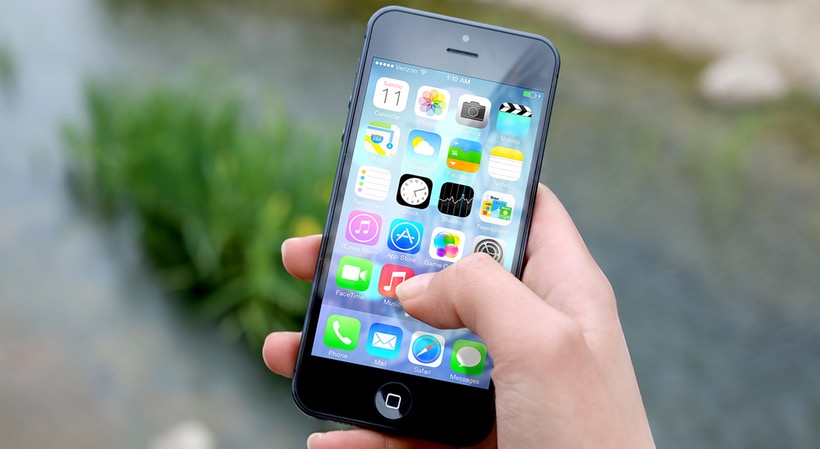Main Street businesses are in a pitched battle with e-commerce mega sites. To compete with the allure of online shopping, local merchants are exploiting every opportunity available to drive in-store purchases.
Here are several ways your fellow small businesses are using a rising tide of mobile marketing solutions to attract foot traffic, and how you can compete in this tech-driven world.
Showing up in local searches
According to the Google report, “Understanding Consumers’ Local Search Behavior,” one in three searches on a smartphone happens just before consumers visit a store. That means that people are out and about, and looking for businesses like yours. And that means opportunity.
Kent Dagnall, principal consultant at Kent Dagnall Consultants, based in Atlanta, Georgia, said that Google decides which businesses will show in local results by looking at three main factors: profile consistency, content quality and GPS location.
To get the full benefit of this free form of mobile marketing, ensure that your business name, address and phone number are updated and correct, and resist changing them, Dagnall said, to avoid getting demoted in Google’s mobile search results.
Another key to ranking higher in local search results: continuously introduce fresh, high-quality content to your website.
“Develop blog posts and articles around phrases you know customers are searching for, and make sure to use the names of your neighborhood or part of town more often than the city name,” Dagnall advised.
Related: How to Get Started with Real-Time Mobile Marketing
Mobile ads: worth considering
Build on your mobile search optimization efforts by adding paid mobile advertising to your marketing mix. Here are two specific options we’re seeing work well:
Geo Fencing
Brick-and-mortar Main Street businesses have started building fences — mobile geo fences, that is. Fencing allows you to create a marketing perimeter around your business (for example, a five-mile radius), where your mobile ads pop up only for prospects inside that “fence.” Just think how much more likely someone is to take action and come through your door if you hit them with a promotion when they’re very close by.
“There is a convenience chain in Texas that markets through fencing, with offers that revolve around the time of day, i.e. morning is for coffee and breakfast items. The chain has a mobile ad click-thru rate of 0.18 as their goal, and they average 101 percent of that goal,” Rob Weisbord, chief operating officer of Sinclair Digital Group, which houses Compulse, specializing in digital ad solutions, said.
Paid Ads on Review Sites and Apps
Bryan Clayton, CEO of GreenPal (described as Uber for lawn care), said that his company tried a variety of mobile ads, including on Facebook, Google, Twitter and Instagram, but found the best bang for their buck came from page sponsorship ads on the review site Yelp.
In fact, GreenPal’s Yelp ads converted 67 percent of the time into paying customers for GreenPal. No other paid channel could top that.
Clayton is a big fan of advertising on review sites partly because of the quality of the traffic.
“A visitor from Yelp is not the same as a visitor from Google or Facebook, because when they come to you, they are at the very bottom of the purchasing decision funnel; they have read your reviews, they have read about your business, and they are qualified and ready to buy,” Clayton said.
It’s Okay to Be Trendy
While optimization for mobile search and mobile ads might be longer-term tactics, being opportunistic with trends may be worth testing, too. The PokémonGo phenomenon, for example, took an interesting turn as marketers saw potential opportunity. The mobile app, which attracted the under-12 set and millennials, sent a flood of youth into the streets (sometimes into traffic, reportedly) in search of digital Pokémon.
The unintended effect of this game was that these players were walking by businesses every day. Showing their entrepreneurial genius, restaurants and stores quickly began catering to those PokémonGo players by offering happy hour specials and discounts.
Max Robinson shares a great example implemented at U.K.-based company, WeSwap Currency:
“We noticed huge amounts of people of all ages hanging near our building and realized that it was related to PokémonGo.”
So Robinson decided to get active with his brand’s barely-used Snapchat account. His team used Snapchat to not only keep followers updated on PokémonGo, but also to promote their own products. The brand’s high visibility clothing, which had been gathering dust in the store, suddenly became a hot Pokémon commodity.
Sign Up: Receive the StartupNation newsletter!
“We sold over 200 high visibility items (mainly vests) in the first two weeks of August. Better yet, many of these items were emblazoned with our logo,” Robinson said.
Yes, the PokémonGo craze has subsided, and the marketing opportunity along with it. Trends like this will always pop up. The key is to do what small businesses do best – be nimble and responsive. If you can blend in trendy opportunities while maintaining longer-term mobile marketing efforts, you’ll be best positioned to master the power of mobile marketing.
Local mobile marketing opportunities are constantly morphing, and your Main Street tactics will have to continue to evolve to keep up. The good news: we’re only just starting to see the ways that mobile marketing can translate into foot traffic and sales for brick-and-mortar businesses, leveling the playing field in this competitive marketplace.
This article originally appeared in the April 2017 edition of The Costco Connection.






